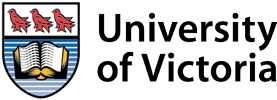Home / Communication and Public Relations / “Thoughts” for Allied Professions
“Thoughts” for Allied Professions

In life and in all professions, humans’ greatest asset is the ability to think. Using our minds wisely for our individual and collective good provides advantages—in health and wealth—and ongoing progress.
In all professions, our thinking evolves from the effects of a basic high school education to broadening our knowledge through higher learning and a specialization, as many professions require.
As we move on in our life experiences and chosen careers, most of us don’t stop our learning with the credentials afforded by specializing. Numerous diplomas and degrees are awarded by colleges and universities, acknowledging individuals’ chosen disciplines, passion, and focus of service.
The Canadian Charter of Rights
In this personal “thinking” journey, The Canadian Charter of Rights and Freedoms guarantees “freedom of thought, belief, opinion, and expres.sion, including freedom of the press and other media communication.”
Canadian philosopher John Ralston Saul points out that as learning past the restraints of specialization, “the definition of our second fundamental freedom begins by talking about the freedom of thought—notice it begins with thought, not facts—and goes on to belief, opinion, and expression.”
I believe that most of us—adults in professions—carry on debates in our own minds on many and various subjects.
The Divided Brain
There are two main hemispheres in our brain.
The left brain can be summed up as using logic, being detail-oriented, ruled by facts, versed in words and language, the present and past, math and science—more in terms of order and pattern. It is reality-based, forms strategy, and is practical and safe.
The right-brain-function is “big-picture-oriented,” uses feelings, where imagination rules along with symbols and images; appreciates; aligns with the present and the future; and is more open to philosophy and religion. It “believes,” has special perception, is fantasy-based, presents possibilities, and is impetuous and risk-taking.
Those functions are documented in depth in Iain McGilchrist’s The Master and His Emissary: The Divided Brain and the Making of the Western World (2009).
In our “thinking” development, this inward journey is worthy of investigation, as are the consequences of one brain hemisphere dominating throughout history.
Egg Metaphor
One metaphor for using both sides of the human brain is in the symbol of the egg. At breakfast one morning when I was first serving in Iraq, a discussion ensued by contactors, soldiers, and others about “the most valuable part of an egg—the yellow yoke or the egg white?”
Various opinions were shared and supported until a retired Master Sergeant walked by, after listening from afar. He said, “Enough. The egg comes as a unit. Eat it as God made it. Both sides complement one another.”
That is the way our brain was designed, what study is advocated, and how our own thinking can be enhanced by balancing the use of both sides of the brain.
A Doctor’s Advice
A few days ago I was laid up, thinking about this article, and watching Young Dr. Kildare (1938) on Turner Classic Movies.
In the script, two doctors are leaving the operating theatre, one a seasoned professional, and intern Dr. Kildare.
~ You did very well, Kildare.
~ You have good hands, good head.
~ Thank you.
~ Do you mind if I make one suggestion? You have a natural tendency to use your right hand too much. Give your left hand more to do. It saves time.
And I don't need to tell you that in an operation, every half-second saved is priceless.
~ I'll try.
~ And another thing. In your spare time, try using your left hand...when you're writing, shaving, eating. You'll find that will help a lot.
~Thank you very much.
~ That's quite all right. Good night.
~ Good night.
That’s good advice for everyone in life and in all professions.
By Nigel Atkin
Nigel is the founding member and a long-standing instructor of the Public Relations diploma program.
This article is featured in the 2024 winter edition of The Scrivener. The Scrivener is the tri-annual magazine of the BC Notaries Association that publishes articles about points of law and the notary profession.

- Posted December 2, 2024
RELATED TOPICS: CommunicationPublic Relations
Visit Registration
2nd Floor | Continuing Studies Building University of Victoria Campus 3800 Finnerty Road | Victoria BC | CanadaTel 250-472-4747 | Email uvcsreg@uvic.ca
2025 © Continuing Studies at UVic
Legal Notices |
Sitemap

